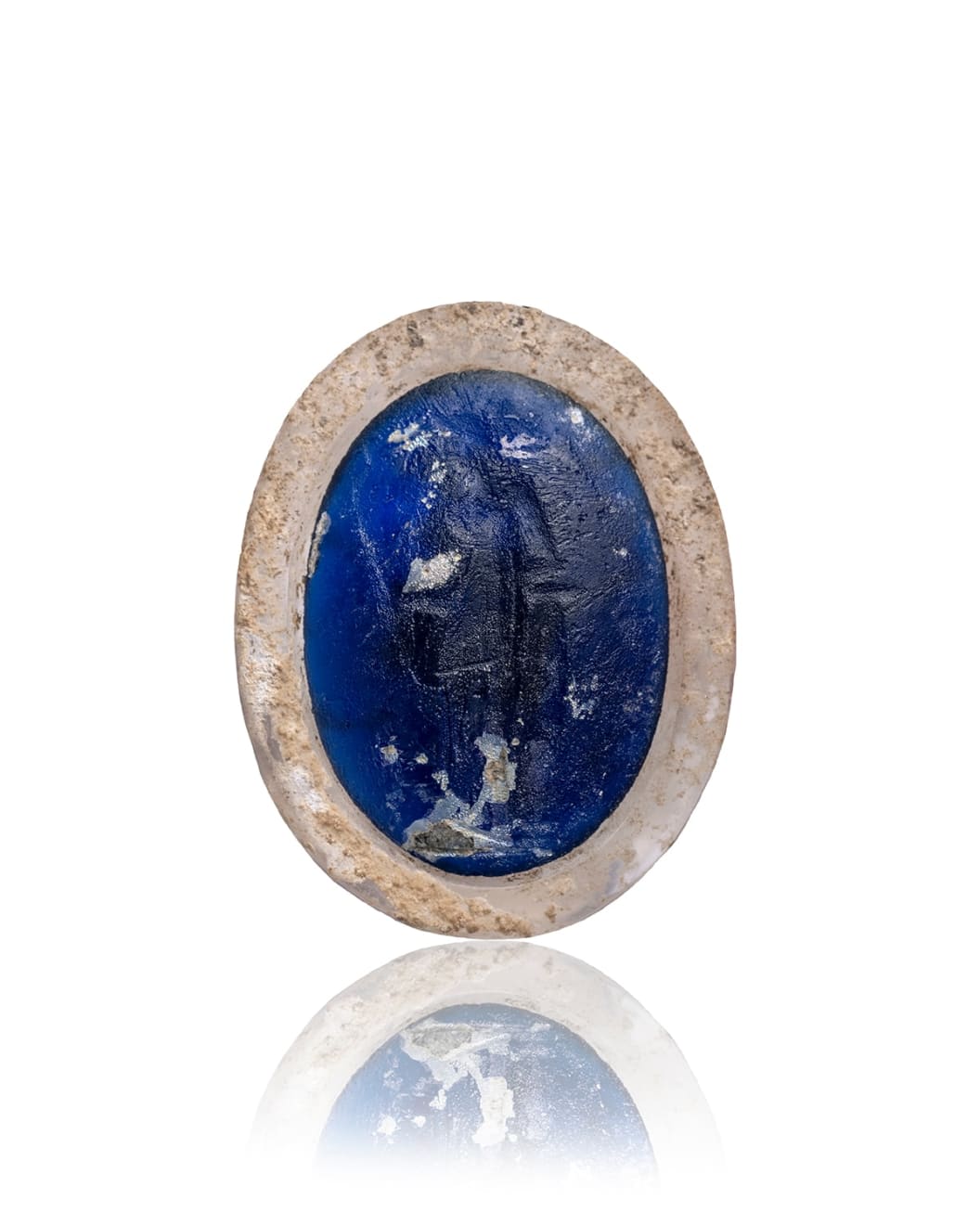Greek
Further images
Provenance
Jean Sigrist Collection, Basel, acquired in the 1960s - 1970s
With Galerie Nefer, Zurich, 2002
Private collection, Switzerland
Literature
The form of this large and impressive ring is characteristic of the Hellenistic period. Rings of this shape were made in a variety of materials, including gold, glass, and ivory. Rock crystal was a highly prized luxury material; this ring would have been a statement of wealth and power.
For the ring form, see D. Plantzos, Hellenistic Engraved Gems, Oxford, 1999: Type IIB. There is also a similar rock crystal ring from the Cesnola Collection in the Metropolitan Museum of Art, New York: acc. no. 74.51.4293.
The dark blue glass intaglio may have been intended to imitate lapis. The remains of gilding on the rock crystal setting suggests that the interior of the bezel may have been gilded to produce a particularly beautiful glittering gold effect when light shone through the ring. For a similar glass intaglio set in a bronze ring in the British Museum, see acc. no. 1917,0501.1287.





